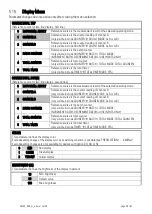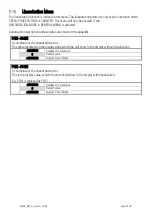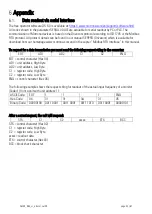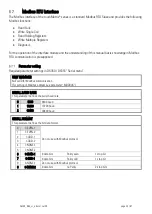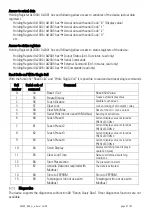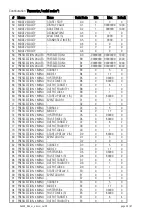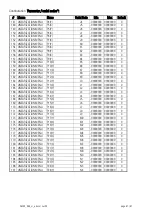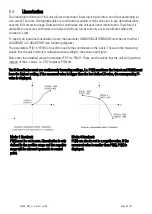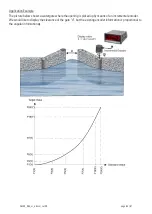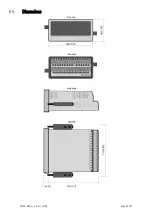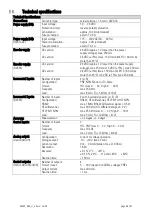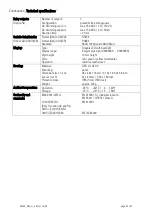
Dx350_06d_oi_e.docx / Jul-20
page 63 / 67
Linearization
The linearization function of this unit allows converting a linear input signal into a non-linear developing (or
vice versa). There are 24 programmable x/y coordinates available, which can be set in any desired distance
over the full conversion range. Between two coordinates, the unit uses linear interpolation. Therefore it is
advisable to use more coordinates in a range with strong curves and only a few coordinates where the
curvature is less.
To specify an individual linearization curve, the parameter LINEARISAZATION MODE must be set to either 1
QUADRANT or 4 QUADRANT (see following diagram).
The parameters P1(X) to P24(X) are used to specify the coordinates on the x-axis. These are the measuring
values that the unit normally would generate according to the actual input signal.
Now enter the attached values to parameter P1(Y) to P24(Y). These are the values that the unit will generate
instead of the x- values, i.e. P5(Y) replaces P5(X) etc.
The X-Coordinates must use continuously increasing settings, i.e. P1(X) must have the lowest and P24(X) must
have the highest setting. If the measured value is bigger than the last defined X-value, the corresponding Y-
value is displayed.
Mode: 1 Quadrant:
Mode: 4 Quadrant:
P1(X) must be set to zero. Linearization is only
defined in the positive range and the negative
range will be mirrored symmetric to central
point.
P1(X) can also be set to a negative value. If the
measured value is smaller than P1(X), P1(Y) is
displayed.


